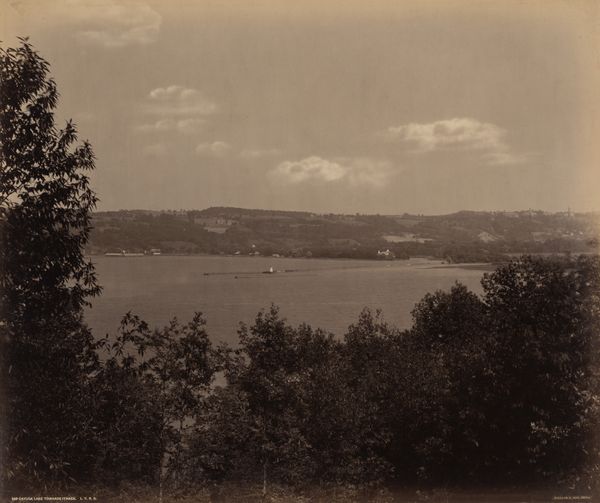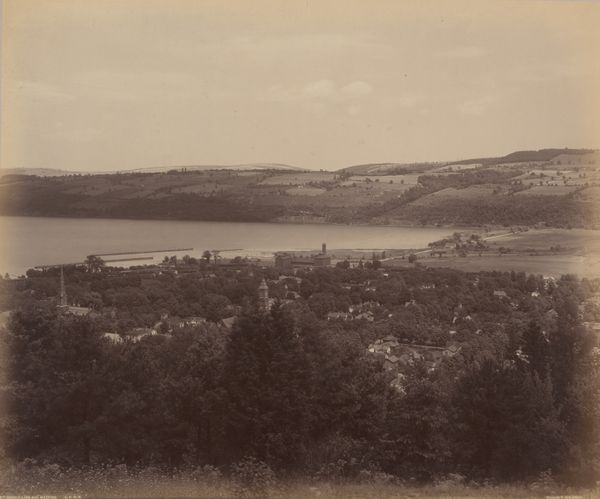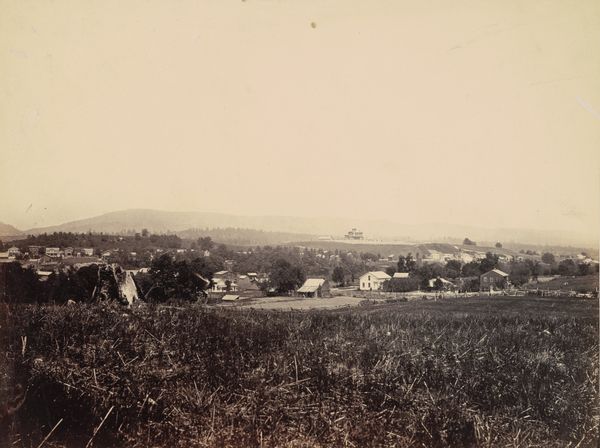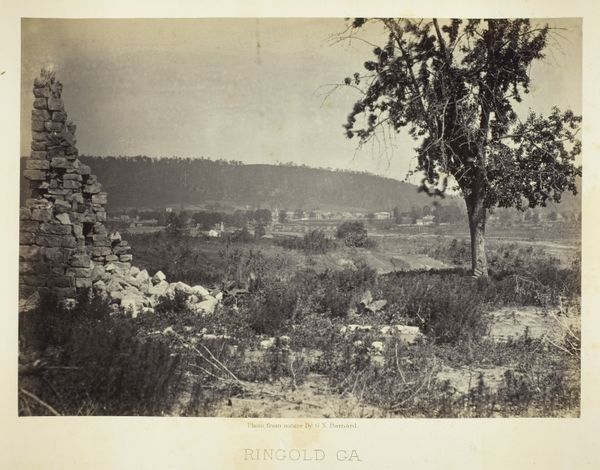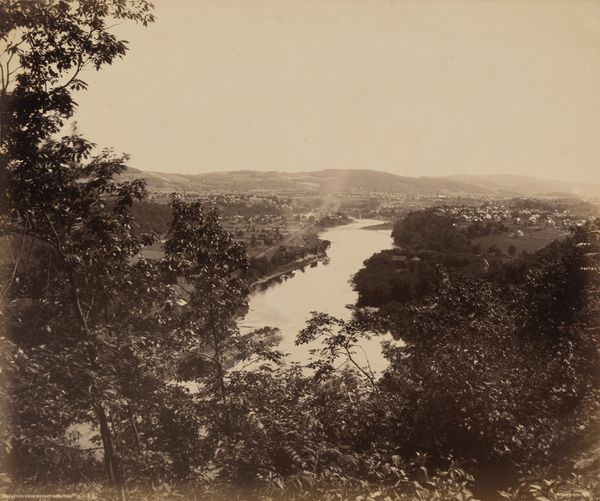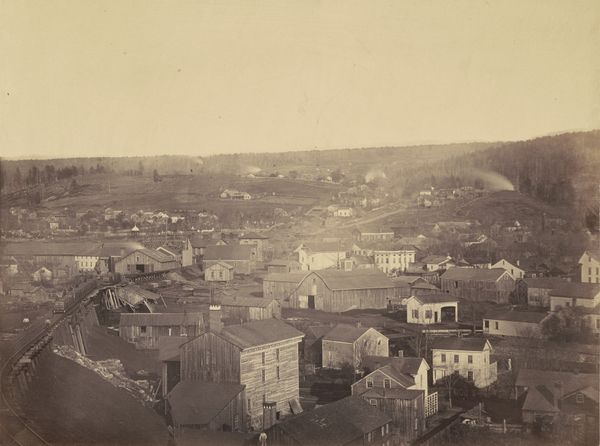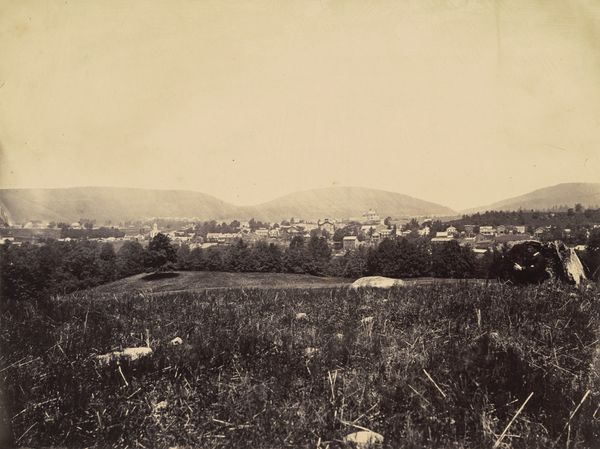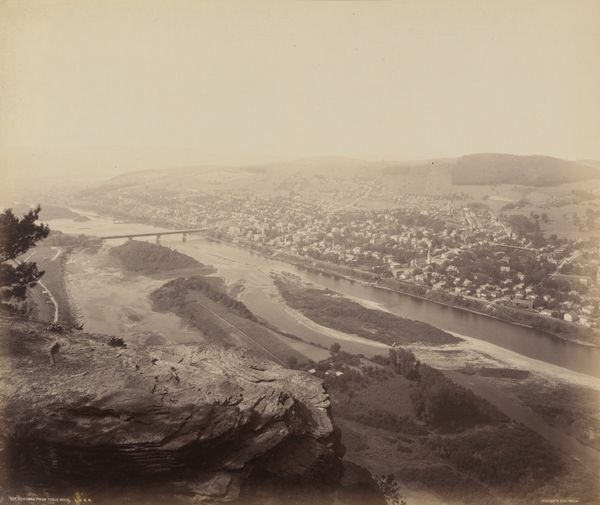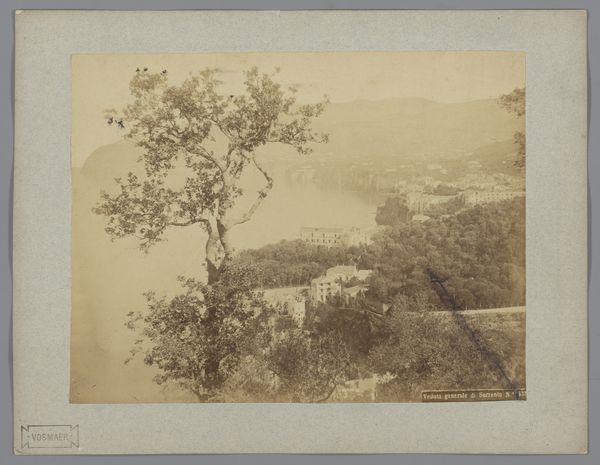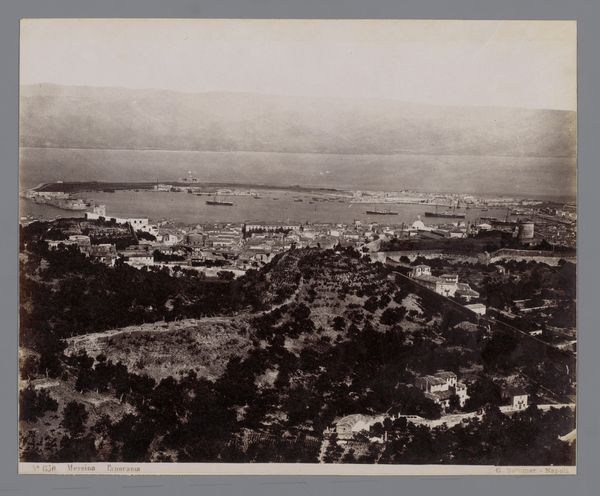
photography
#
pictorialism
#
landscape
#
photography
#
cityscape
Dimensions: image: 43.5 × 52 cm (17 1/8 × 20 1/2 in.) mount: 49.7 × 60.6 cm (19 9/16 × 23 7/8 in.)
Copyright: National Gallery of Art: CC0 1.0
Curator: This photographic print by William H. Rau, titled "Easton, From Weygat Mountain," captured around 1895, presents a layered view of a developing city within its natural landscape. Editor: My first impression is of a veil, almost. The soft focus lends a dreamlike quality, a nostalgia that mutes the urban spread beneath. It feels less like documentation and more like memory. Curator: I find that dreaminess to be very characteristic of Pictorialism. It elevates photography to an art form, moving beyond mere reproduction. We see the city presented through a softened, romantic lens. And notice the intentional composition - nature is framed and staged here. Editor: Right, and that staging suggests a particular relationship to place. Was this a time of great industrial expansion in Easton? It feels like Rau is offering a counterpoint, or perhaps a way to soften the visual impact of urbanization. To show what the public wants to remember. Curator: Exactly. The gaze drifts gently over the roofs, towards the river. Water holds significant symbolism, offering both change and renewal. Rau positions Easton in transition, framed against an enduring nature. And those trees and the mountain they stand on, seem to safeguard the past and observe what is happening to them. Editor: And how does Rau use photography here to express themes relating to identity and progress, constructing a certain narrative about American expansion during a crucial moment in our cultural narrative? Curator: Well, Rau gives agency to the landscape and softens the stark reality of the development—hinting at a harmonious narrative where the wild landscape gives way gently to the cultivated urban sphere. It echoes the symbolic weight of progress painting that was prominent in earlier decades. Editor: I appreciate how this work engages with tensions of memory and landscape, presenting questions about identity in times of social change. The effect is timeless and strangely moving. Curator: Agreed. Rau asks us to consider the layers of history, both visible and veiled, that make up a place, revealing that the city’s history isn’t separate from its landscape.
Comments
No comments
Be the first to comment and join the conversation on the ultimate creative platform.
